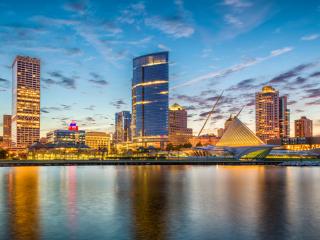
Milwaukee, Wisconsin
A Community Impact Story
Visit Milwaukee: Creating Tangible Impact Among Diverse Small Businesses
Social Impact Framework: Supplier Strategy

What is the issue you were trying to address?
Visit Milwaukee sought to build a partnership base that better aligned with our mission: to support a stronger, more inclusive community through connecting diverse and inclusive businesses to the growth opportunity presented by the leisure travel and convention markets.
What were the stated objectives of this initiative?
We wanted to launch a partnership rate that reduced or removed barriers to entry to local businesses and organizations, especially very small ones, so that they, too, can benefit from the economic benefits of tourism.
What were the specific metrics you used to measure the success of your efforts?
We built and expanded identification tags in our partnership database. This became our framework to measure success. The tags were based on various categories of diversity, including AAPI, Arab, Black, Caribbean, Disability, Jewish, Latino, LGBTQ+, Native American, Veteran, and/or Woman-owned.
What were the specific outcomes and results of your efforts?
We created a D&I tier of partnership (diverse-owned, woman-owned, LGBTQ+-owned, veteran-owned, disabled-owned).
Adding tags into our database allowed us to include relevant partners in sales campaigns and track the number of partners who signed up with us. As of late 2024, we reached a milestone of over 1,000 partner businesses, with a total of 1,022 partners. Notably, 338 partners (33.1%) are recognized as IDEA (Inclusion, Diversity, Equity, and Access) partners. Additionally, the Visit Milwaukee website features a category filter, allowing users to search by IDEA categories and explore a curated list of these valued partners.
Visit Milwaukee is now seen as more representative of the entire community. Business owners speak positively about Visit Milwaukee which has allowed us to welcome partners into our organization. The businesses that engaged with us most were the ones that ended up renewing their partnership.
We have heard stories from partners such as Delicious Bites, which has benefited positively from the marketing and exposure Visit Milwaukee brought to their business, such as our social media posts and presence at our Annual Meeting.
At Peace Design told us they were so thankful for the opportunity to be showcased in Union Station at Wisconsin Day in Chicago, an opportunity they could have only dreamed of. Her ability to become a partner that made that happen.
Style Pop Café has shared that “Visit Milwaukee has done a phenomenal job in connecting [us] with all sorts of people and businesses that have helped us thrive in ways we once thought was impossible.”
Is there any other information you'd like to share, including any best practices or key lessons learned?
We added reasonable restrictions around it so it was truly just for small businesses and not those that could afford the higher/regular rates. We also ensured that we weren’t just talking the talk, but we actually were promoting these businesses just like any other business that we work with that may be paying a higher rate. Businesses in this tier received full benefits of partnership and weren’t treated as “entry level.”

